
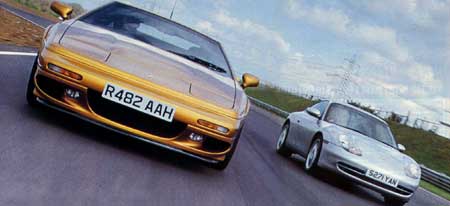
DREAMMACHINES
The Esprit and 911 have two
different approaches to supercar thrills,
but the end result for the drivers the same – exhilaration. Which excited
us most?
Auto Express Special Edition
CARS TESTED
Lotus Esprit V8-GT
3.5 litre/350bhp £49,950
Porsche 911 Carrera 4
3.4 litre/300bhp £67,850
For the lucky few with the cash to match their driving enthusiasm and ambitions, this sector is where the fun really starts to kick in. With huge horsepower, on tap, race car-like grip and outrageous styling, machines such as these are the stuff of dreams.
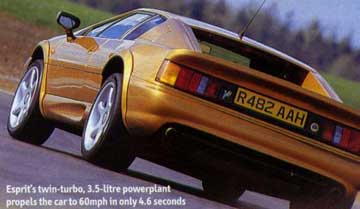
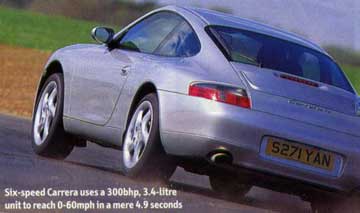
Within the supercar format, though, Porsche and Lotus have taken very different approaches to their vehicles. The Porsche 911 is a rear-engined, four-wheel-drive, normally aspirated model which is built from steel in Stuttgart. On the other hand, the Lotus is a mid-engined, turbocharged, rear-wheel drive car with a body fashioned from fibreglass in Norfolk. However, the two do share a love of power because the 911's flat six-cylinder engine boasts 300bhp, while the Esprit's V8 is good for an awesome 350bhp.
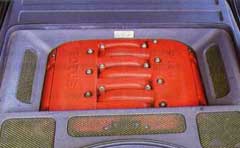
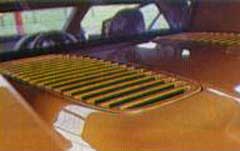
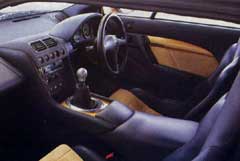
Once the drivers has slid into the Lotus, it is clear that we have entered real, old-fashioned sports car territory. Luxuries are sparse – the GT is pared down to weigh 40kg less than the standard model – while the quality of trim leaves something to be desired. Indeed, some of the detailing is downright scruffy. It's all a bit dark and dingy, too. However, such niggles on a £50,000 car become trivialities when you hear what sits just inches behind the driver's back. The V8 barks into life with a healthy snarl before launching the car towards the horizon. A hint of lag from the twin turbos precedes the boost coming in hard, resulting in an explosive pace. It's not just a brief burst, either, as the power keeps on coming. Even at 7,000rpm, it's barely tailing off. The Esprit is relentlessly fast.
It is just as exhilarating through the corners, at least in the dry. The driver needs to remain involved – indeed, the car needs more input than the benign, four-wheel-drive Porsche. But it keeps the driver informed, and is surprisingly manageable. The steering offers plenty of feedback, allowing skilled drivers to balance traction against braking when turning into corners. It converts the initial, gentle understeer into tail-out oversteer under power, in a gradual transition which can inspire confidence.
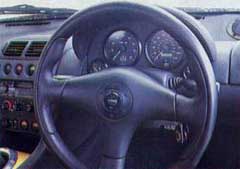
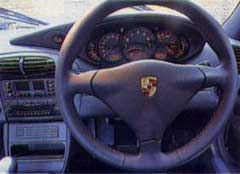
In the wet, however, all that power being fed through extremely low-profile tyres can make the Esprit quite a handful. The tail will drift out if the wider rear tyres catch a puddle and, though it remains controllable, the throttle requires a delicate touch. A moment's loss of concentration could result in disaster.
There's no doubt that the Lotus is fun, mixed with a little adrenaline if not a hint of fear. Manic, buzzy, loud and crazy, it's hard not to step out of the Esprit a little wide-eyed and with slightly frayed nerves. Porsche 911s used to be rather like that – but not this one. The clues start as soon as you step inside its elegant frame. Where the Esprit is a lively, impromptu knees-up, the Porsche is a nigh at the Opera. Fixtures and fittings are luxurious, while visibility and ergonomics are much better.
But this car remains a thoroughbred Porsche. The engine sings with the 911's familiar deep whirr even if, in this model, the volume appears to have been turned down. The six-speed gearbox is so precise that it makes even the much improved Lotus linkage feel sloppy. The brakes, too, are more impressive than those in the Esprit and as for pedal arrangement, the Porsche wins again.
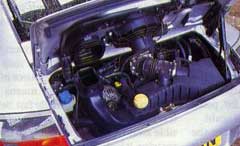

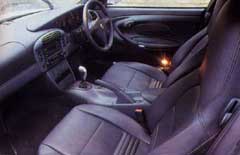
These factors combine to make the 911 a far more relaxing drive than its Norfolk rival. Nor is it as maniacally fast – the power is delivered more evenly, a proportion of its 300bhp being absorbed by the four-wheel-drive transmission in a body which is 150kg heavier than the Esprit's. Although the 911 is fantastically quick by average car standards, the Lotus isn't average.
The 911 is deceptively fast, and not least because of the quiet engine. Its handling, massive grip and sturdy chassis are also contributing factors. It hugs the tarmac while shrugging off awkward mid-corner bumps like a limousine. Under hard cornering, the Porsche pushes its nose slightly wide when entering the bend, but balances out as it goes through, the redistribution of weight in the sensitive steering providing ample feedback to the driver.
Even with the seven-sensor traction control turned off, this isn't a challenging car to drive. If the tail slides wide, the rear engine provides more momentum that the Lotus. Usually, however, a bit of throttle pulls the front wheels into line. In wetter conditions, the car is barely any slower than in the dry.
Dedicated, enthusiastic drivers will find the Porsche a delight, but may feel slightly detached from the source of the action. Its huge capability means you need to be going abnormally fast before it really comes alive, which is rarely possible away from the race track. So the Lotus wins. It is always so full of fun, driving it can become addictive. . . in the dry.

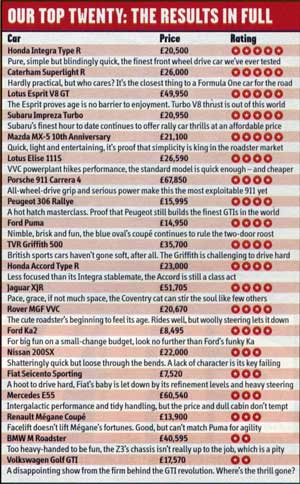
|
|